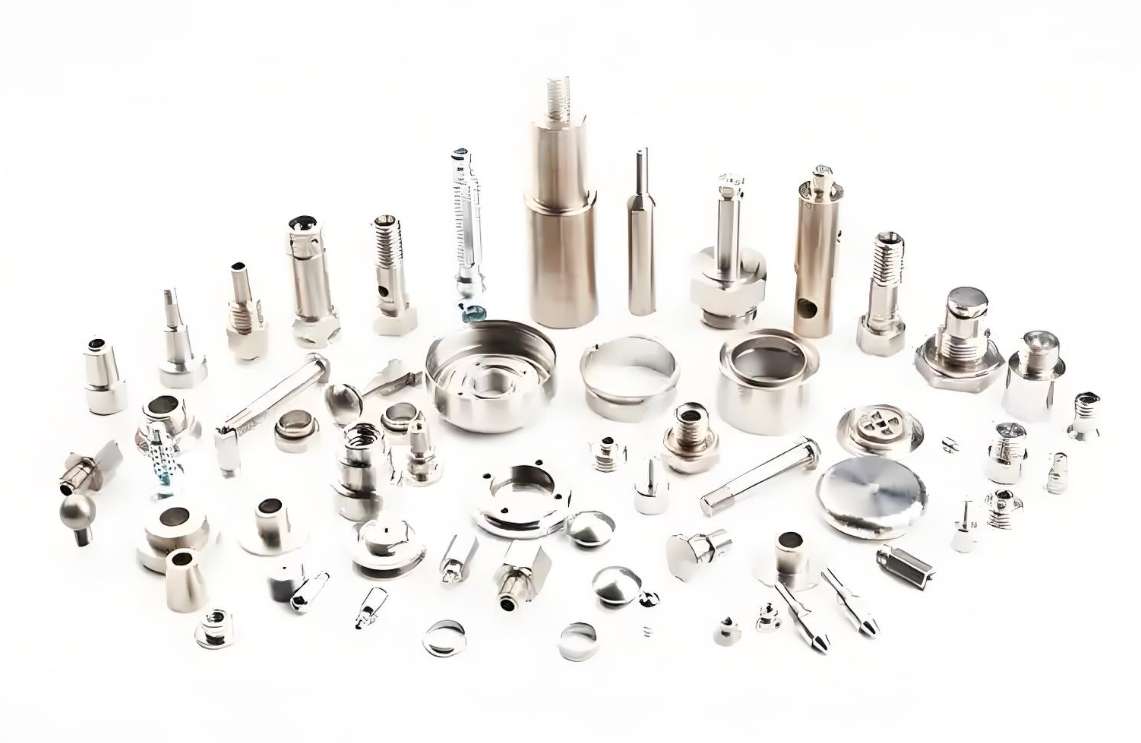
For small and medium-sized manufacturing enterprises spread across the globe,small-batch precision metal part machining projects often come with a dilemma:how to strictly control costs while meeting the increasingly rapid delivery requirements.Whether it is for prototypes in the development phase or small-batch production for niche markets,how can key metal part machining projects be delivered on time within a limited budget?This article will explore practical strategies to achieve this balance.
Where Does the Cost Pressure Come From?
In the field of small-batch CNC machining,the cost structure is far more complex than imagined:
Material Preparation and Waste:The unit price of metal raw materials purchased in small batches is often higher,and the material waste generated from initial programming and first-piece debugging is significantly increased when allocated to small batches.
Equipment and Labor Investment:Machining precision metal parts by turning and milling requires high-precision CNC equipment and skilled operators and programmers.Small-batch orders struggle to fully amortize these fixed costs.
Process Switching and Debugging:Frequent changes in machining programs and tooling fixtures for different parts compress the valuable effective operating time of machines,increasing the cost per unit of time.
Post-Processing and Inspection Costs:Each process of precision parts,including cleaning,heat treatment,plating,laser marking,and strict dimensional and performance inspections,accumulates costs.
Where Is the Bottleneck in Delivery Speed?
In addition to cost,the delivery cycle often becomes a pain point:
Equipment Scheduling Conflicts:Small and medium-sized machining plants have limited resources.When multiple projects arrive simultaneously,shared CNC equipment may become a bottleneck,causing your parts to wait in line.
Process Chain Dependency:Complex metal part machining often requires collaboration among multiple processes(e.g.,CNC milling followed by heat treatment and then precision grinding).Any delay in one link will affect the overall delivery.
Supply Chain Response Delays:Custom tools,special materials,or outsourced surface treatments,if not available on time,will bring the entire project to a standstill.
Rework and Communication Costs:Misunderstandings of drawings and minor errors during machining lead to rework,and the time spent on communication and coordination may far exceed expectations.
Practical Balancing Strategies:Collaborative Design and Flexible Manufacturing
Balancing cost and delivery speed is not impossible;the key lies in early involvement and optimized collaboration:
In-Depth Collaboration in the Design Phase(DFM):
Proactive Communication:In the early stages of product design,provide your drawings or concepts to a reliable partner for precision metal machining by turning and milling as soon as possible.
Manufacturability Assessment:Based on its CNC equipment capabilities,tool library,and process experience,the supplier can quickly identify potential issues in the design that may lead to high costs or long cycles(such as excessively deep cavities,extremely small internal fillets,or special material choices)and offer optimization suggestions.A minor chamfer design modification may save a stress-relief process.
Standardization Considerations:Where functionality permits,use common material specifications,standard tool sizes,and general surface treatment processes to reduce customization needs and waiting times.
Flexible Optimization on the Manufacturing Side:
Process Integration Expertise:Look for suppliers skilled in using multi-axis CNC machines(such as turn-mill centers).Completing multiple processes such as turning,milling,drilling,and tapping in one setup greatly reduces the number of setups and cumulative errors,significantly improving accuracy and efficiency and shortening overall machining time.
Intelligent Scheduling and Capacity Transparency:Choose a partner who can provide relatively transparent production scheduling and progress updates.Understanding their equipment load helps to anticipate potential delays and address them together.
Modular Fixturing and Quick Changeover:Experienced suppliers invest in modular fixture systems(such as EROWA,3R)to quickly switch tooling between different part machining,minimizing machine downtime.
Localized Collaboration Network:Prefer suppliers with a stable local collaboration network for key post-processing steps(such as heat treatment and special coatings)to reduce logistics turnaround time.
Clear Communication and Project Management:
Clarify Priorities:At the start of the project,communicate honestly:is the current focus more on cost control or delivery speed?Suppliers can adjust their strategies accordingly(such as using domestic alternative tools,prioritizing orders).
Set Realistic Expectations:Based on design complexity and resource availability,jointly agree on practical target delivery times instead of simply compressing schedules.
Choose a Professional Partner:Service providers specializing in small and medium-batch precision metal part machining have equipment configurations,process flows,and management mindsets that are better suited to the characteristics of such projects,offering more balanced advantages than large-volume factories or small workshops.
The Key Lies in Partner Selection
The successful delivery of small-batch precision metal part machining is essentially a precise collaboration between you and your manufacturing partner.Suppliers with deep experience in precision machining of metal parts,proficiency in CNC flexible processes,and a willingness to deeply participate in the design phase are often reliable allies in breaking through the cost and speed dilemma.They not only provide machining services but are also co-decision makers in the rapid,economical,and reliable implementation of your products.
Are you looking for answers to the cost and delivery cycle of your small-batch precision part project?Explore the possibilities of CNC precision machining further and visit our independent website for more industry insights and technical resources—professional partnerships begin here.